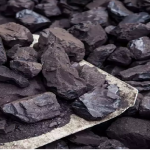Coal exporters are experiencing the biggest drop in prices in over a decade. Global appetite for coal had been declining throughout 2019 primarily because of the declining demand in western economies. As a policy, both Europe and U.S. have been slowing moving away from coal-fired power plants, and toward cheaper and greener energy. This was a finding of the International Energy Agency (IEA) in a recent report. Coal-based electricity will take a smaller share in the global energy mix over the next decade. However, there is a clear shift in demand for coal, according to IEA—from the Western onto Asian economies. Asia—particularly China—will determine whether coal will survive.
The recent price slumps have certainly affected coal mining companies causing many to cut down operations. Prices for Australian coal Brent has been cut by half since Aug-19 (read more: “Global coal markets in distress“, Sep 5, 2019). Great coal supply and low consumption has causes prices across regions to touch new lows. The trouble however is not merely coming from Western economies. Though China and other Asian economies including India are certainly consuming significant thermal coal to power their plants, their motivation to move out of coal consumption is also evident in recent policies. China has been rightfully worried about its deteriorating environment and has vowed to cut down coal imports which has also contributed to the demand slowdown.
In May of this year, analysts were observing major Japanese investors putting money into renewable plants in Asia. Investment into renewables has certainty caught fire in this part of the world and is no longer a western phenomenon as climate change challenges are more visible than ever before. This poses a considerable threat to the outlook on coal especially where coal exporting countries are concerned. However, moving away from fossil fuels will only be incremental. Though China has put a cap on its coal consumption and imports, it continues to build more coal-fired power plants.
And even as Japanese investors have been eyeing renewables, coal has not completely gone off the grid. In fact, Japan is still funding a lot of coal-fired power plants in developing countries where it believes energy demand is growing. The official policy is to keep providing support to countries in power generation where fossil fuels are used, whenever needed. Since coal is the most cost-effective fuel, using better coal producing technology could keep the gains from coal and reduce emissions at the same time.
Evidently, coal will remain resilient even when demand is slower. Governments have to put in a lot of money out of their own reserves to fund renewable projects which remains the biggest setback in their offtake. Perhaps, things would move south faster if China’s coal strategy shifts significant direction. That time is not here yet.





